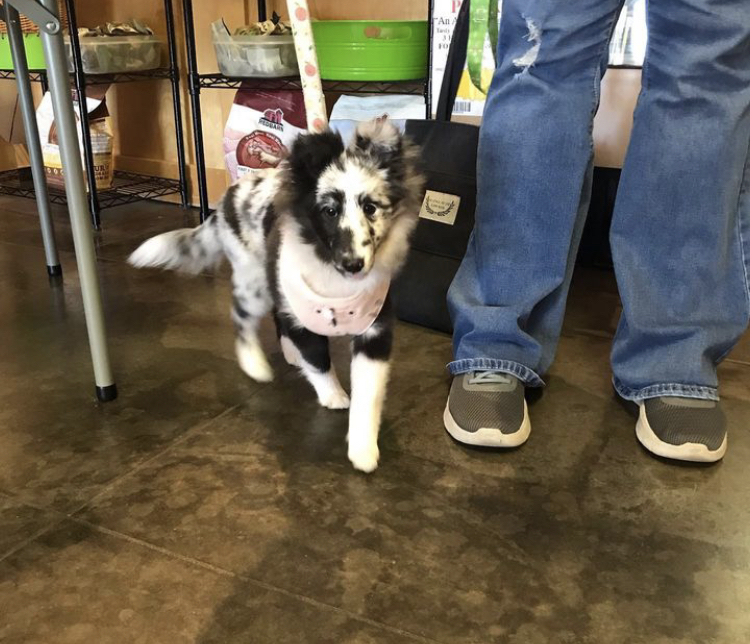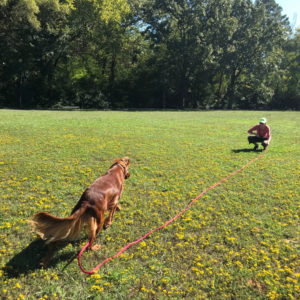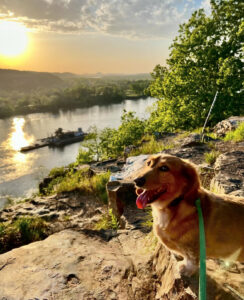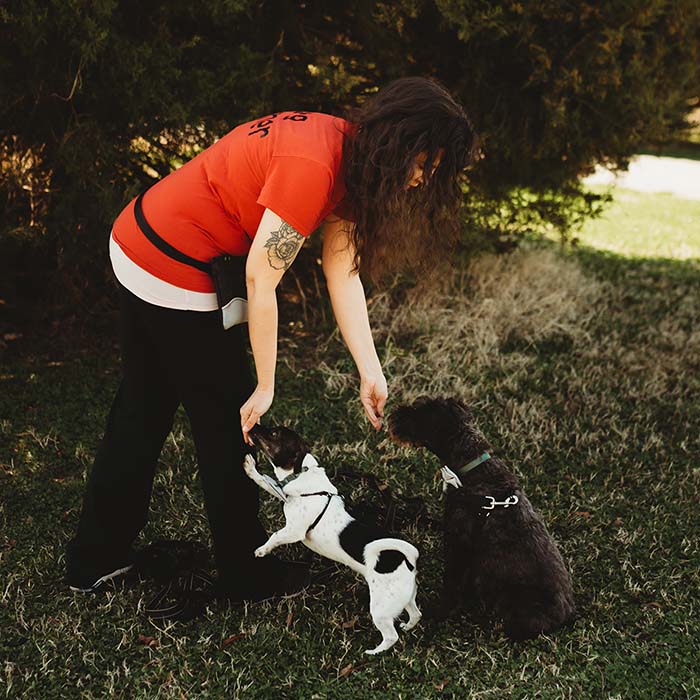Please note: This does not and is not intended to cover every possible solution when it comes to eliminating inside.
Horror. That’s I felt when I realized that my dog, Rosie, had peed on my bed. It didn’t seem like it had been with any sort of intent – she hadn’t squatted, she hadn’t searched out the bed, she was still peeing outside and on walks. The only thing that made sense was incontinence, but our veterinarian couldn’t find anything medically wrong.
She was my second challenging dog when it came to potty training.
Lexi had come on the scene as my pandemic puppy in 2020, a dumped dog. She had several different kinds of parasites, and woke me up five times a night the first few months with diarrhea. But she was also really cute, and had a really fun personality, so working through all of that seemed worth it.

Except Lexi is also a social marker. She holds small amounts of urine and continuously pees on walks, even more than Jeeves, my only male dog. When it came to inside the house, I couldn’t figure out if she was social marking, or if she couldn’t hold it, or if she didn’t understand. We moved a lot, too, between December 2020 and August 2021, so it was hard to have an established routine with her and figure out a good system.
Once we did, however, have a reliable place to live, I started working on a system for both.
For puppies who are just learning, the best system I’ve found is Dr. Sophia Yin’s, which she outlines in The Perfect Puppy in 7 Days:
1. Eyes on the puppy
2. Puppy contained in a crate or pen
3. Leash on puppy, attached to a human
There should also be a set schedule for elimination as well, during the day. A general guideline is that the puppy can “hold it” one hour for every month of age, up to about four hours. So a four-month-old puppy could reasonably be expected to be okay for about four hours, but this can vary from puppy to puppy. Some may only be able to do two hours until they’re about a year old. Puppies cannot be expected to not have an accident if they’re being left alone for six or more hours.
If the puppy is out of a crate and being active, like playing and exploring, they should go out about every 20-30 minutes, especially after drinking or eating. When a puppy is more active, they tend to have to go more. Again, this will vary by puppy.
Figuring out their tells can also help a lot:
1. Wandering off
2. Sniffing in a circle
3. Getting choppy
I also like to recommend scattering a few small pieces of treats outside for the puppy to sniff, as this helps the puppy (or dog) relax. I compare it to getting the kids in the car for a long road trip. They insist they don’t have to go until they’re buckled and you’re just down the street, then suddenly they do. They are just relaxing and becoming more aware of their body, instead of being excited and overstimulated about being in the car, or, for the puppy, being outside.
Did you know that excessive chomping is usually the puppy having a need but not being aware of the need or knowing how to express it? If your puppy is playing well, then suddenly hurting you, take them outside! They may have to potty, or they may need a nap, or they may be hungry or thirsty.
For older dogs, a similar system can be helpful.
I started off by removing access to areas I didn’t want them to sneak off to. That meant the stairs for the landing and the hallway at the top, plus the bedrooms, since all of it was carpeted. From there, I made sure we were on a consistent and frequent walking schedule for eliminations. I also wasn’t leaving them longer than six hours. I got them conditioned so well that now when I walk in the front door, even after taking the trash out, they run to the backdoor.
I also had to be aware that, with Rosie when I first brought her home, it would take time to get on a good schedule. She didn’t eliminate at all for the first day or two, and she didn’t eliminate on walks for about three weeks. Once she felt comfortable, and we got into a good groove, I was able to predict what and when she’d have to go. And it varied for a long time between one and two poops a day. Plus, all of our work disappeared when she kept getting sick.

But illness isn’t the dog’s fault.
In fact, punishing a dog at all for accidents is a good way to both give a dog behavioral issues and encourage them to get more creative about hiding from the humans when they do have to go. If a human rubs their dog’s nose in their accident, hits them, or yells at them, the dog will NOT learn that it’s not okay to eliminate inside.
Potty issues are not a moral decision for dogs, and punishment doesn’t teach them what they did wrong.
Instead, they learn that their human isn’t safe, and they get creative about where they hide their accidents. I’ve even had Rosie find a towel and cover up a mess with it.
So if there’s an accident, stay calm, don’t react, clean it up, and make note of where you made the mistake (not your dog).
Sometimes it’s not a temporary illness like parasites or bacteria but an issue like a urinary tract infection or a kidney disease (typically terminal). I’ve see both in clients. Usually, the humans will know their dog has a kidney disease, but they won’t be aware of the UTI. Starting off with a visit to vet with potty training issues is important to rule out medical reasons and can save training costs.
And sometimes it’s anxiety, which was what I was seeing in Rosie. Once we got her on some anxiety meds, her incontinence completely disappeared. But I didn’t make that choice immediately. In fact, I worked with her veterinarian for about a year and a half to rule out medical and other simpler behavioral issues before we decided to try medical. Now, she’s doing fantastic, and it’s just a lot easier for her to exist in the world.
If you need help figuring out what’s going on with your dog, let me know. I’ve been there and I know it isn’t easy, but finding answers is such a relief.




